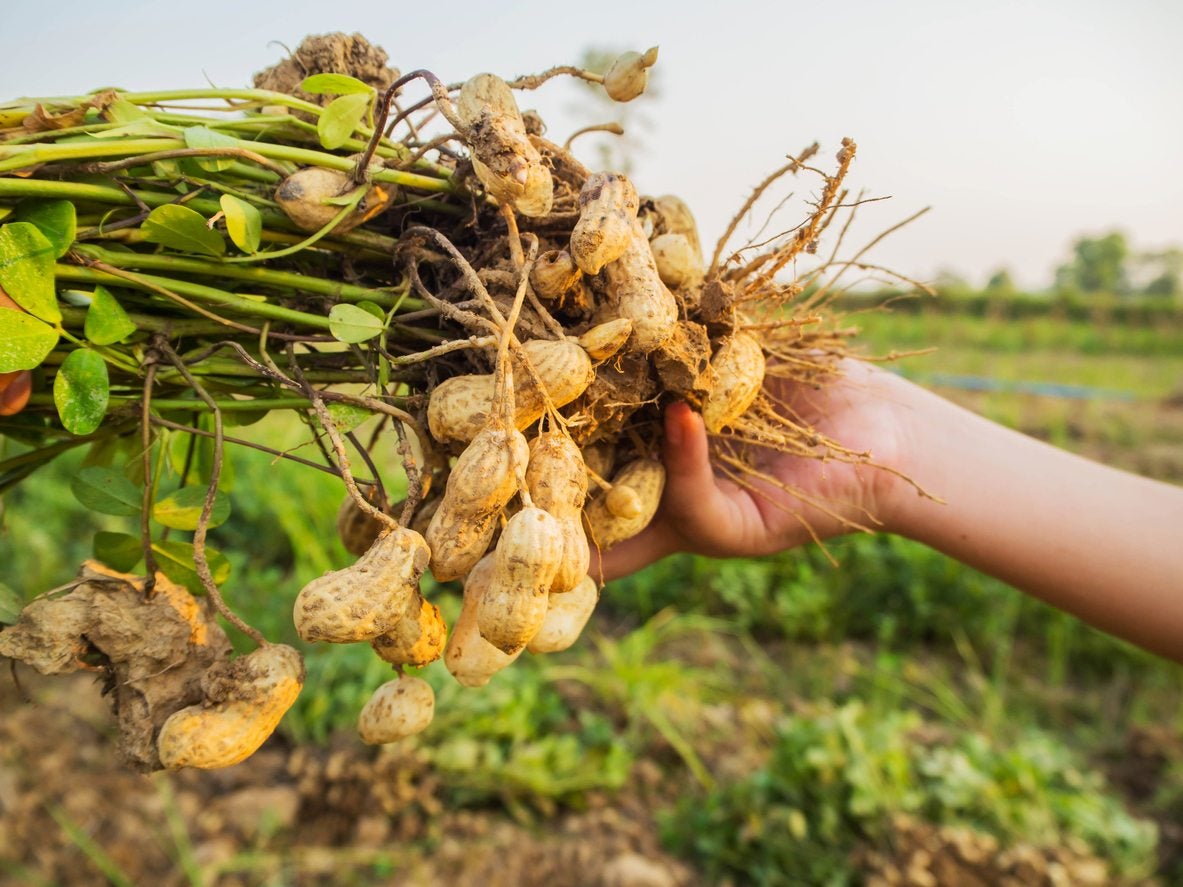Types Of Peanut Plants: Learn About Different Varieties Of Peanut


For many of us who grew up on PB & J, peanut butter is a comfort food. Like me, you may have noticed how the prices of these little jars of comfort have skyrocketed in the last few years. Due to rising prices and a desire to avoid unhealthy food preservatives, many home gardeners are now toying with the idea of growing their own peanuts and making their own peanut butter. How hard can it be, you may ask? After all a peanut is a peanut. Then a Google search of peanut plant seeds reveals that there's more variety to peanuts than you knew. Continue reading to learn about the differences between these peanut plant varieties.
Types of Peanut Varieties
There are four main types of peanut plants grown in the United States: runner peanuts, Virginia peanuts, Spanish peanuts, and Valencia peanuts. While we are all probably familiar with Spanish peanuts, they actually only account for about 4% of the peanut crops grown in the U.S. The most commonly grown type of peanut plants are runner peanuts, which make up about 80% grown. Virginia peanuts account for 15% and Valencia peanuts contribute to only 1% to the U.S. peanut crop.
- Runner peanuts (Arachis hypogaea) are primarily grown in Georgia, Alabama, and Florida, with Georgia producing 40% of the U.S. peanut crop. Runner peanuts are most commonly used in the production of peanut butter.
- Virginia peanuts (Arachis hypogaea) are primarily grown in Virginia, North Carolina, and South Carolina. They produce the largest nuts and are most often used as snacking peanuts. Virginia peanuts have also become very popular in gourmet, all-natural peanut butters.
- Spanish peanuts (Arachis fastigata) are primarily grown in Texas and Oklahoma. Their nuts have bright red skins. Spanish peanuts are used in candies or sold as salted, shelled peanuts for snacking and are also used in the production of peanut butter.
- Valencia peanuts (Arachis fastigata) are mostly produced in New Mexico. They are known as the sweetest tasting peanuts and are, therefore, very popular for all natural and homemade peanut butters. Valencia peanuts also make delicious, boiled peanuts.
Breaking Down the Different Varieties of Peanut
These four types of peanut plants are further broken down into different varieties of peanuts. Some common varieties of runner peanuts are:
- Florunner
- Sunrunner
- Southern Runner
- Georgia Runner
- Georgia Green
- Flavor Runner 458
Common varieties of Virginia peanuts include:
- Bailey
- Champs
- Florida Fancy
- Gregory
- Perry
- Phillips
- Sugg
- Sullivan
- Titan
- Wynne
Some of the most common varieties of Spanish peanuts are:
- Georgia-045
- Olin
- Pronto
- Spanco
- Tamspan 90
Generally, most of the Valencia peanuts grown in the U.S. are of the variety Tennessee Reds.
Sign up for the Gardening Know How newsletter today and receive a free copy of our e-book "How to Grow Delicious Tomatoes".
